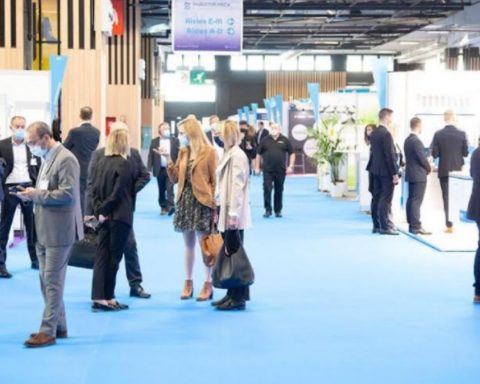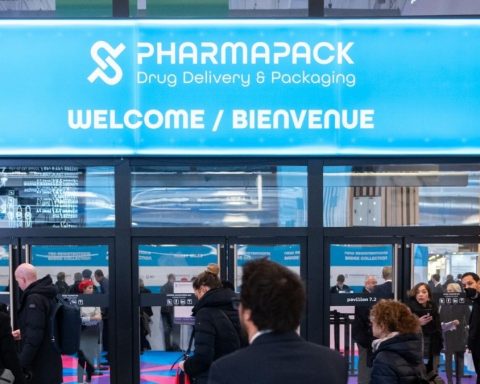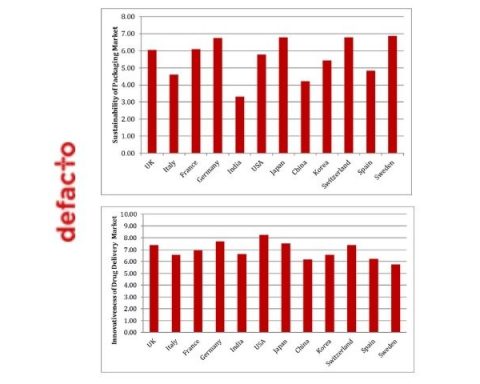2023 will see continued packaging consolidation, increased device viscosity capabilities and a more forgiving MDR runway
Paris – Ahead of next week’s returning Pharmapack Europe 2023 (February 1-2) the event’s panel of experts predict increased consolidations in 2023 – driven by supply chain concerns and big pharma preferences – a relaxation of MDR deadlines and high viscosity delivery as the biggest area of device innovation.
The event – which is at the heart of pharma’s packaging and drug delivery devices industry – returns to the Paris Expo, Porte de Versailles (Hall 7.2) and will see 5500 attendees and over 300 companies exploring next generation technologies and looking ahead to debate the major industry developments and growth opportunities. “In drug delivery and packaging we will see some big trends in 2023, particularly if you look at the Pharmapack Start-hub – where we explore the new innovations that will potentially make it to market in the next few years. Here, one of the notable trends is innovation around intradermal injection delivery – where immune response is triggered with a lower dose. What to look out for at the event, we expect the ‘three big trends’ to dominate again and that is reflected in our conference agenda. The challenge is that improved ‘patient-centric devices,’ ‘increased sustainability of devices’ and ‘lower overall costs’ are often competing against each other, so how these play out will define the year ahead. Overall, our Pharmapack experts feel sustainability concerns are likely to take the lead for pharma in 2023, before a convergence of all three trends occurs in 2024 and beyond.” Commented Laura Indriksone, Brand Manager at Pharmapack Europe.
The event’s far-reaching report to be published at the show foresees continued challenges ahead for smaller and medium sized packaging companies who are likely to face significant competitive pressures – with companies turning over €20 million or less particularly exposed as potential acquisition targets.
Report expert Gregor Nischer, MP Corporate Finance GmbH Managing Partner explains this tension is a consequence of the large companies re-evaluating their supply chain in the last few years: “Pharma customers like to have suppliers they can reply upon for more than single components (e.g. cap, bottles etc) and increasingly want providers that can provide complete solutions. At the same time, regulations are becoming more complex, and small companies don’t have the necessary resources, meaning the development of products is becoming prohibitively expensive.”
Another challenge the report highlighted is that many companies are looking to sell products globally, with multiple regulatory burdens and divergent standards, meaning they need to be able to simultaneously meet very different requirements. Consequently, we will see a continuation of the recent trend for acquisitions of European assets by larger – albeit not large per se – USA manufacturers with goal of gaining a foothold in Europe.
Nischer added: So if we look at the European market solely through the prism of turnover, I think we could say contract packaging and component supply companies with a turnover of €80 million or above, I would think are broadly safe. Those with less than €20 million are highly vulnerable, and those between €20 and €70 million should be looking at their options in terms of how they can acquire and build towards the €100 goal. These are of course also potentially the most attractive assets for investors, and I think this is where you will see the biggest movement in the year ahead. How can these companies be ‘armed’ with required capital to grow out and acquire complementary assets – potentially in other continents? I think it’s also important to mention that Pharmapack Europe itself plays a significant role in the process, as it acts as a very big ‘shop window’ for many of these US investors and companies looking for entry into Europe. That’s one of the main reasons I come to get a head start on developments, trends and potential partnering options.”
In terms of device and design innovation, the Pharmapack report experts foresee the development of larger volumes and higher viscosity devices as this year’s hottest area – particularly for biologics delivered via autoinjectors. Brennan Miles, Head of Drug Delivery, Team Consulting, added:“Ultimately, in 2023 we can expect to see a continued focus on novel technologies for delivery of higher payloads for self-injection, as well as a continued demand for other low-cost devices to suit generic therapeutic applications for both the respiratory and injectables markets.”
Sustainability is also another area seeing a shift as even device developers working on five to seven year development timelines are now exploring lifecycle impact of devices. This is forcing all parties to look further afield at their supply base to understand the impact that those businesses have. In the device field, a wider consideration of reusable and re-processable devices, falling under the circular economy grouping, is again widening the horizon of what is possible and, more importantly, what is actually needed by patients.
Consideration of the whole lifecycle needs to be planned in from the beginning of the development to ensure the maximum gains can be made, for example designing to minimise interim transportation packaging. As new medical devices and technologies can often take upwards of five to seven years to reach the marketplace our expectation is that we won’t see any pivotal changes on this topic in 2023.
Alastair Willoughby, Head of Mechanical Engineering, Team Consulting








